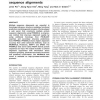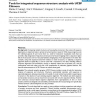111
click to vote
NAR
2011
14 years 3 months ago
2011
Gene duplications are scattered widely throughout the human genome. A single-base difference located in nearly identical duplicated segments may be misjudged as a single nucleotid...
CORR
2010
Springer
14 years 10 months ago
2010
Springer
In the last years an increasing demand for Grid Infrastructures has result edin several international collaborations. This is the case of the EELA Project, which has brought togeth...
135
click to vote
NAR
2007
15 years 3 days ago
2007
Multiple sequence alignments are essential in homology inference, structure modeling, functional prediction and phylogenetic analysis. We developed a web server that constructs mu...
115
click to vote
JCSS
2002
15 years 8 days ago
2002
We study two fundamental problems concerning the search for interesting regions in sequences: (i) given a sequence of real numbers of length n and an upper bound U; find a consecu...
109
click to vote
BMCBI
2005
15 years 15 days ago
2005
Background: Protein sequence alignments have become indispensable for virtually any evolutionary, structural or functional study involving proteins. Modern sequence search and com...
103
click to vote
BMCBI
2005
15 years 15 days ago
2005
Background: Popular methods to reconstruct molecular phylogenies are based on multiple sequence alignments, in which addition or removal of data may change the resulting tree topo...
103
click to vote
NAR
2006
15 years 16 days ago
2006
Expresso is a multiple sequence alignment server that aligns sequences using structural information. The user only needs to provide sequences. The server runs BLAST to identify cl...
121
Voted
BMCBI
2007
15 years 18 days ago
2007
Background: The analysis of the promoter sequence of genes with similar expression patterns is a basic tool to annotate common regulatory elements. Multiple sequence alignments ar...
111
Voted
BMCBI
2006
15 years 19 days ago
2006
Background: Comparing related structures and viewing the structures in the context of sequence alignments are important tasks in protein structure-function research. While many pr...
102
click to vote
BMCBI
2006
15 years 19 days ago
2006
Background: Percentage Identity (PID) is frequently quoted in discussion of sequence alignments since it appears simple and easy to understand. However, although there are several...



